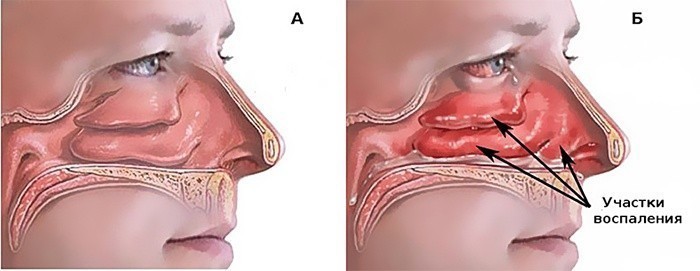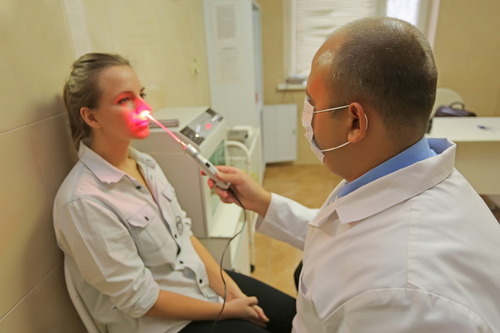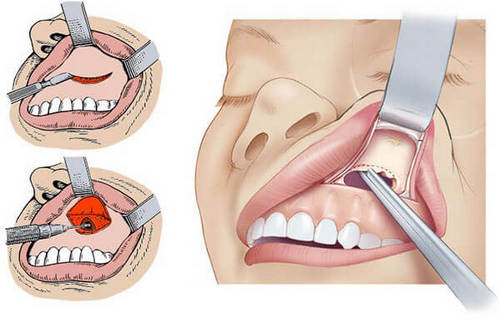According to modern classification vasomotor rhinitis refers to the chronic pathologies associated with dysfunction of the nasal mucosa. Acute vasomotor rhinitis is extremely rare in children at an early age.
Very quickly becomes protracted relapsing form not amenable to standard methods of correction. As a rule, is diagnosed with neurovegetative form of disease, because other causes a negative impact to reveal very difficult.
The disease is known by such terms as idiopathic rhinitis, rhinitis unspecified noninfectious and non-allergic etiologies. The symptoms of m causes, treatment and prevention are considered on this page, but the information is exploratory in nature. Therapy should be carried out only under the supervision of a physician.
Characteristic symptoms appear almost immediately as soon as the violation occurs physiological regulation of vascular tone of the blood capillaries in the mucosa. As a result of expansion of capillaries, there is a development of swelling of the mucous membrane, provoking the allocation of large amount of mucous secretion.
Significant causes pathology is currently not fully understood, but there is speculation on the relationship of violations of the processes of transmission of nerve impulses in the Central nervous system. Often, chronic vasomotor rhinitis occurs as the associated diseases with vascular dystonia. There are also risk factors, likely leading to impaired regulation of vascular tone.
They include:
- increased anxiety and stress in the enhancing effect of anxiety (in children it is often associated with separation from parents, the beginning of kindergarten);
- improper treatment of acute respiratory diseases caused by viral and bacterial pathogens;
- chemical and thermal burns of the mucous membrane of the nasal airway (can occur by inhalation of caustic substances, the sauna and steam bath);
- Smoking, including passive;
- high humidity is a risk factor, along with increased dryness of the air;
- chronic pathology of the stomach and esophagus (acid reflux, heartburn, hyperacidity gastritis, dysphagia);
- facial injuries, which can be formed to the curvature of the nasal septum;
- deviation natural hormonal levels at certain periods of life (puberty, pregnancy, menopause, oral contraceptives);
- side effect of pharmacological drugs, most often drugs of groups a hypotensive, a vasoconstrictor or thrombolytic means;
- long flowing allergic rhinitis in combination with other manifestations of hay fever.

Timely treatment and prevention allow us to restore damaged mucosa and improve the condition of the capillaries. How to do it – read on in the article.
Form and symptoms of vasomotor rhinitis – how to recognize the disease?
Depending on the shape, the symptoms of vasomotor rhinitis may occur continuously or alternate with periods of well-being, when any signs of disease are absent, and the person feels completely healthy. A distinctive feature of this disease, concludes that nasal congestion with abundant intechange (cold) starts after exposure to a particular traumatic factor. It may be a nervous shock, violation of the regime of work and rest, hypothermia, visits to crowded or noisy places, like a bath and more. How to recognize this disease and what are the features you should pay attention? Try to understand.
Symptoms can manifest as on the one hand, and grab both the bow stroke. More susceptible to women after the age of 18 years. In children is rarely diagnosed because the clinical picture is effectively disguised as ARI and ARI.

Usually the signs of judgement, and do not allow immediately, without any differential diagnosis to make a correct diagnosis:
- the separation of the mucous secretion of the nasal passage with a clear, nonviscous structure;
- starts runny nose all of a sudden, can end also without interference at any time;
- a few hours later can join sneezing, dryness and nasal congestion;
- gradually develops a twang of voice and reduced acuity of smell (patients are unable to recognize even a fairly sharp smell).
Unit on forms of vasomotor rhinitis allows us to differentiate the pathology, depending on the suspected cause of the defeat of vascular tone. The hardest form idiopathic, not allowing to establish and resolve the cause, against which the treatment becomes quite difficult, and often brings quick relief of the patient’s condition.
Reflex type of rhinitis can occur even in perfectly healthy people and is, in fact, a defensive reaction to the adverse factors. Most often it provokes the introduction of allergens, the effect of hot and cold air, certain vapors with irritant properties.
Medication vasomotor rhinitis is a consequence of the intake of certain pharmaceutical drugs, after the abolition of which the cold completely goes away. As a rule, such effect is not immediate action, and develops gradually over 10-12 days. The most often observed after prolonged use of one type drops with a pronounced vasoconstrictor effect in treating the common cold to SARS, or allergies. Such side effect is present in some groups of antihypertensive drugs.
Hormonal form develops on the background of concomitant diseases of the pituitary gland and the thyroid gland. Women can be the result of hormonal disturbances during pregnancy and during menopause.
Neurovegetative vasomotor rhinitis is the most common form of disease, occurs as an associate of the disease in the disruption of the Central nervous system. This is manifested by bouts of anxiety and decreased performance. There may be unpleasant sensations in the heart area (tingling, pressure, compression), headaches, changes in blood pressure. It was after these symptoms begin to show signs of vasomotor rhinitis.
The differential diagnosis includes a series of studies designed to exclude other diseases with similar symptoms. First exclude infectious inflammatory etiology. It’s enough to hold seeding the smear from the nasal passages. In the absence of planted pathogenic microflora, the assumption of infection is removed. Assigned allergic skin tests and consultation of the allergist. This excludes hay fever and allergic rhinitis. You may also want to consult a facial surgeon to avoid injury of the nose, a deviated nasal septum.
During the examination the doctor the otolaryngologist sees characterized by extended shell of the nasal passages, swelling of the mucous membrane and redness due to vasodilation. Assigned to standard radiography of the sinuses, a General full blood count.
Methods of prevention and treatment vasomotor rhinitis
Of great importance in the treatment of vasomotor rhinitis is the search, identification and complete elimination of the negative effects of probable cause. You need to pay attention to the treatment of the underlying disease (VSD or pathology of the stomach). Completely eliminated the factors causing the development of another attack. If there is a deviated septum, it is assigned to a surgical operation for its correction.

Primarily used for so-called non-medicamental methods of therapy. For this you need to review your way of life, to abandon bad habits, to normalize restful sleep and relaxation.
Useful regular physical loading, eliminates anxiety and soothing the nervous system. It is best to go Jogging before going to sleep and use the pool. From the noisy and outdoor games should be abandoned. Yoga and meditation also help to improve vascular tone in the nasal mucosa.
hardening and vitamin mineral complexes strengthens the immune system and increases the vitality of the body. It is necessary to conduct active prevention of viral and bacterial infections, as they may provoke a prolonged attack of vasomotor rhinitis.
Drug treatment is used only during periods of exacerbation with the aim of eliminating unpleasant symptoms. Etiologic treatment does not exist, drugs can only relieve, remove swelling and runny nose. Used vasoconstrictor nose drops, saline solutions for washing trains with eucalyptus oil. In severe cases, it can be shown therapy with steroid drugs in the form of drops (cortisone, prednisone).
Methods of prevention of vasomotor rhinitis include a range of measures aimed at strengthening the immune system, elimination of diseases of the digestive and nervous system, regular vaccination against influenza. Recommended summer holiday at the seaside. It strengthens the vascular wall and normalizes the process of separating the mucous secretion. In exceptional cases, it may be shown reflexology (stimulation of biologically active points on the body acupuncture).




Hi, just required you to know I he added your site to my Google bookmarks due to your layout. But seriously, I believe your internet site has 1 in the freshest theme I??ve came across. It extremely helps make reading your blog significantly easier.
Great web site you have here.. It’s hard to find excellent writing like yours nowadays. I seriously appreciate individuals like you! Take care!!